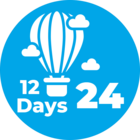Released
Web Socket - FME Engine Model Change
With FME now supporting web socket layer there is an inherent problem in the product I've noticed. That is, the most important part of a web socket connection is the ability to publish real time data to applications. Unfortunately this ties up an ENTIRE FME engine constantly.
From my perspective there is very little use for the web socket layer in the current model. There needs to be an extension or something on a different costing model which allows multiple feeds to be running constantly.
To give an idea of where I'm coming from I'll explain my situation. Real time traffic and transport management applications is what I'm working with at the moment and when you're receiving GPS from your assets and from monitoring systems I want to connect the data/events together in a real time web mapping application. Currently, FME can in no way be fit for purpose (unless 20 FME engine licenses suddenly drop in price).
This is the article I base any assumptions off:
https://knowledge.safe.com/articles/1305/websocket...
From my perspective there is very little use for the web socket layer in the current model. There needs to be an extension or something on a different costing model which allows multiple feeds to be running constantly.
To give an idea of where I'm coming from I'll explain my situation. Real time traffic and transport management applications is what I'm working with at the moment and when you're receiving GPS from your assets and from monitoring systems I want to connect the data/events together in a real time web mapping application. Currently, FME can in no way be fit for purpose (unless 20 FME engine licenses suddenly drop in price).
This is the article I base any assumptions off:
https://knowledge.safe.com/articles/1305/websocket...
This post is closed to further activity.
It may be a question with a best answer, an implemented idea, or just a post needing no comment.
If you have a follow-up or related question, please post a new question or idea.
If there is a genuine update to be made, please contact us and request that the post is reopened.
It may be a question with a best answer, an implemented idea, or just a post needing no comment.
If you have a follow-up or related question, please post a new question or idea.
If there is a genuine update to be made, please contact us and request that the post is reopened.
Enter your E-mail address. We'll send you an e-mail with instructions to reset your password.














